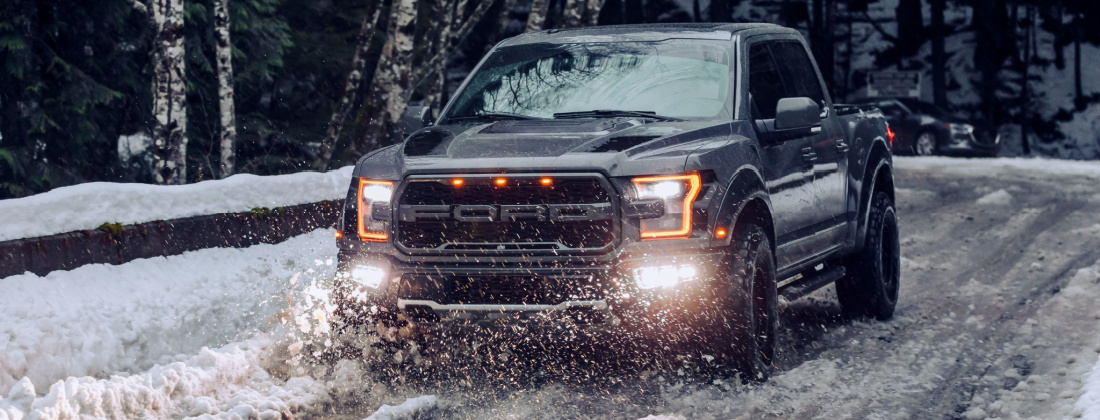Drops in Temperature Cause Drops in Tire Pressure
October 26, 2022

Ensuring that your tires are correctly inflated is critical to getting the most out of your car, particularly during the colder months. Besides, the only contact point between your vehicle and the path ahead is your tires. Multiple issues happen to your car when we get any kind of dramatic temperature change, such as cold to hot or hot to cold. The air pressure in the tires diminishes, and that annoying light on the dashboard that reads low tire pressure appears.
You undoubtedly need your tires to be at the appropriate air pressure when driving down the street for various reasons, including safety, improved traction on the road, and longer tire life, to name a few. When the temperature falls by ten degrees, the pressure in your tires drops 1-2 PSI for every 10-degree temperature fall. Therefore, we advise motorists to visit our experts to examine their tires and ensure safety.
Is It Usual For Tires To Shed Pressure When It Gets Cold Outside?
On a frigid morning, almost everyone in Canada has awoken to low or flat tires. What could have happened to my tire pressure is the most common question. They are all classified as mysteries in some way.
Cold temperatures may lead to tire pressure dropping, which isn’t always symptomatic of a leak. Air contracts as a result of freezing conditions, lowering the tire air pressure. Tire pressure decreases by one PSI for every ten degrees that the temperature drops.
Tires with a low pressure are more susceptible to punctures and wear down more quickly, so monitor your tire pressure at least once a month during the winter season if possible. Winter tires can also aid with ice and snow-related performance concerns by offering more traction and reducing the chance of excessive wear due to their tougher design and structure.
Trail Tire has been offering brake service, tire repair, and auto maintenance to the Canadian community for decades. The business focuses on tire repair or replacement, and it stocks a large selection of popular-brand tires from leading manufacturers. Visit Trail Tire today for durable all-season and winter tires that won’t let you down.
Is there a way out?
If you want the best tire grip and performance, and the most extended possible tire life, you’ll need to calibrate the tire pressure to the current temperatures. Tire pressure must be monitored and adjusted more frequently during periods of extreme temperature fluctuations. If your tires have gone into the low pressure “caution” zone due to an icy spell, the only cure is to inflate them back up to specification.
Here’s additional information on how to monitor tire pressure and determine your tire pressure.
You could be thinking that a loss in tire pressure due to colder weather is harmless. Isn’t it possible for me to just wait it out?
We strongly discourage you from doing so. Tire pressure has a significant impact on the safety and performance of a vehicle. Suppose the pressure in the tires is low enough to activate the TPMS warning light.
In that case, it can lead to a loss of high-speed agility, braking capability, and poor traction in wet situations due to a suboptimal contact area. When towing or hauling a big vehicle load, the dangers of low tire pressure are amplified.
In the end, your car was designed and proven to run inside a specific tire pressure range. Tire pressure must be maintained for the vehicle’s performance and security to be maintained. Tire pressure is another one of those tedious automobile tasks, like oil changes.
What is the impact of temperature on tire pressure?
According to a decent estimate, automobile tire pressure typically changes by around 1 PSI for every 10° degree change in air temperature. As a result, if the outdoor air temperature drops 30° degrees since your last tire pressure check, tire pressure should drop around 3 psi.
The pace at which tires shrink can be faster than 1 psi per the 10° degree rule of thumb if conditions reach especially cold. After a 55° degree drop in temperature since the last tire psi adjustment, the low psi warning light flashed brightly on a -11° degree morning. As a result of the temperature reduction, the tire pressure dropped by 8 psi. (If you’re keeping track at home, we documented the air temperature when the tires on that car were last changed to specification.)
What happens if the temperature rises?
If tire pressure is measured in sub-freezing temperatures and the air temperature rises significantly, you risk tire over-inflation. Tires will adjust by around 1 psi for every 10° degree difference in temperature (up or down). The problem is that, unlike when tires fall far below vehicle specifications, your TPMS detection system may not tell you if your tires are overinflated.
Over-inflation of tires, like under-inflation, can have an impact on performance and traction. Over-inflation is another prevalent cause of early tire degradation because it goes unreported so frequently. Tire pressure checks, like oil changes, should be done regularly, according to main expert suggestions.
That still doesn’t mean you should be overly worried about your tire pressure and adjusting it on a daily basis. If you’re suddenly reaching for your winter jacket and gloves, or a bathing suit and sun protection on your way out of the house, it’s possibly time to consider a tire pressure change to match the season.
Are There Any Other Causes For The Low Tire Pressure?
Tire pressure is affected by a variety of factors other than temperature. When you inflate your tires to the right psi one day, and they’re low the next, something other than cold weather likely is to blame. It’s very likely that your tires are losing air.
A minor puncture in your tire or a faulty seal between the rubber and the wheel could produce a sluggish leak. In any case, you should have your car evaluated by a specialist at an automotive repair centre.
Should I Over Inflate My Tires Because The Temperature Is Changing?
Over-inflating your tires is not the ideal option, due to the temperature changes. The tires on your car were designed to operate optimally when inflated to the maker’s suggested pressure. If you adhere to those figures, your tires will perform optimally. If you believe your tires are not up to the task of winter driving, you should consider replacing them.
Trail Tire offers a wide range of automotive and truck tires. Tires can be purchased easily online or by calling one of our tire and wheel specialists. Choose the Correct Tires For Your Vehicle.
Back


